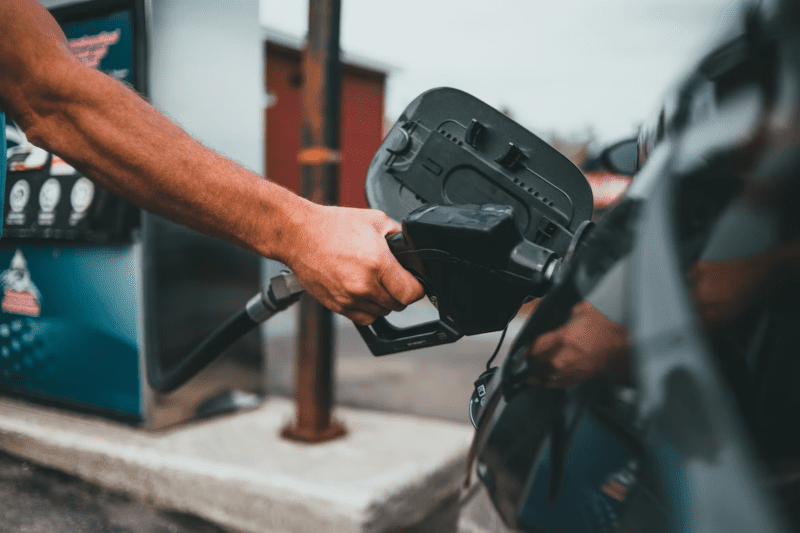
In today’s fast-paced world, where fuel prices continue to rise, finding efficient ways to save fuel has become a priority for many individuals and businesses. Whether you’re a frequent traveler, a delivery driver, or a concerned eco-conscious driver, optimizing your fuel consumption can significantly impact your expenses and the environment.
One critical tool that can assist you in this endeavor is a mileage tracker app. By leveraging the features of such apps, you can easily monitor your fuel usage, track your driving habits, and identify opportunities for improvement.
Today, we will explore ten practical ways to save fuel. From everyday commuters to delivery drivers seeking to optimize their routes, these ten fuel-saving techniques will pave the way toward a more fuel-efficient and environmentally responsible journey.
1. Maintain Regular Vehicle Maintenance
Regular vehicle maintenance is a fundamental step in enhancing fuel efficiency and prolonging the lifespan of your car. A well-tuned engine with clean air filters ensures proper combustion, reducing fuel wastage.
Additionally, keeping tires inflated to the recommended pressure minimizes rolling resistance, optimizing fuel economy. Regular oil changes and engine check-ups prevent mechanical issues that can negatively impact fuel efficiency.
By diligently addressing these essential maintenance tasks, you save fuel and contribute to a smoother and greener driving experience while avoiding costly repairs in the long run.
2. Drive Smoothly and Avoid Rapid Acceleration
Driving smoothly and avoiding rapid acceleration helps conserve fuel by reducing unnecessary fuel consumption.
With this, gradual acceleration and deceleration allow the engine to operate more efficiently, while aggressive driving increases fuel wastage. Adopting a smoother driving style saves fuel and promotes safer and eco-friendly driving habits.
3. Reduce Excessive Idling
Reducing excessive idling is an effective way to save fuel and minimize emissions. Idling for extended periods consumes fuel without any meaningful mileage gain.
However, turning off the engine when parked or waiting for more than a minute can significantly reduce fuel consumption and environmental impact, contributing to a more sustainable driving practice.
4. Choose the Optimal Route
Choosing the optimal route is a smart strategy to save fuel during your journeys. Navigation apps or GPS devices can help identify less congested and more fuel-efficient routes.
By avoiding traffic jams and reducing travel time, you can minimize unnecessary fuel consumption and emissions, making your driving experience more efficient and environmentally friendly.

5. Limit Air Conditioning Use
Limiting air conditioning use can lead to substantial fuel savings. While it provides comfort, AC significantly increases fuel consumption, especially at lower speeds.
Furthermore, consider using the AC sparingly on hot days and opt for rolling down the windows when feasible. At higher speeds, closed windows reduce aerodynamic drag, improving fuel efficiency. Balancing comfort and fuel economy promotes a greener driving approach.
6. Lighten Your Load
Lightening your vehicle’s load is a straightforward method to improve fuel efficiency. Unnecessary items in the trunk or interior increase the vehicle’s weight, leading to more fuel consumption.
Moreover, regularly clean out your car and remove unnecessary belongings. When a vehicle has a lower curb weight, it requires less power to move it, which leads to a reduced amount of fuel it needs to run and a reduced impact on the environment.
7. Utilize Cruise Control
Utilizing cruise control on highways and long stretches of road can optimize fuel consumption. This feature maintains a steady speed, avoiding unnecessary fluctuations caused by human driving habits.
By minimizing speed variations and ensuring a consistent rate, cruise control helps improve fuel efficiency. It also relaxes drivers, promoting a smoother, more economical, and safer journey.
8. Avoid High Speeds
Avoiding high speeds is a practical approach to saving fuel and reducing carbon emissions. Driving at higher speeds significantly increases air resistance, decreasing fuel efficiency.
Fuel efficiency and road safety are improved when drivers obey posted speed restrictions and moderate their speeds. Drivers may create a more sustainable world by committing to a safe and responsible speed.
9. Carpool or Use Public Transportation
Carpooling with colleagues or friends and using public transportation are excellent ways to save fuel and reduce the number of vehicles on the road. Sharing rides minimizes individual fuel consumption, leading to a collective reduction in emissions.
Embracing these eco-friendly practices for regular commutes or short distances helps save fuel costs and promotes a greener and more environmentally conscious lifestyle.
10. Embrace Eco-Driving
Embracing eco-driving involves adopting fuel-efficient practices that contribute to significant fuel savings. Gradual acceleration, coasting to stops, and consistent speed are key components of eco-driving.
Additionally, some modern vehicles come with eco-driving modes that optimize fuel efficiency. These eco-friendly cars and simple adjustments to your driving routine will help you save money at the pump and make a real difference in the supposed fight against climate change by lowering your carbon footprint.
In Summary
Saving fuel is a responsibility that every vehicle owner should embrace. Adopting these ten practical ways to enhance fuel efficiency saves money and contributes to a cleaner environment.
Even minor adjustments to one’s driving style and car maintenance can greatly impact fuel consumption and greenhouse gas emissions. Let’s drive responsibly and pave the way for a greener, more sustainable future.



